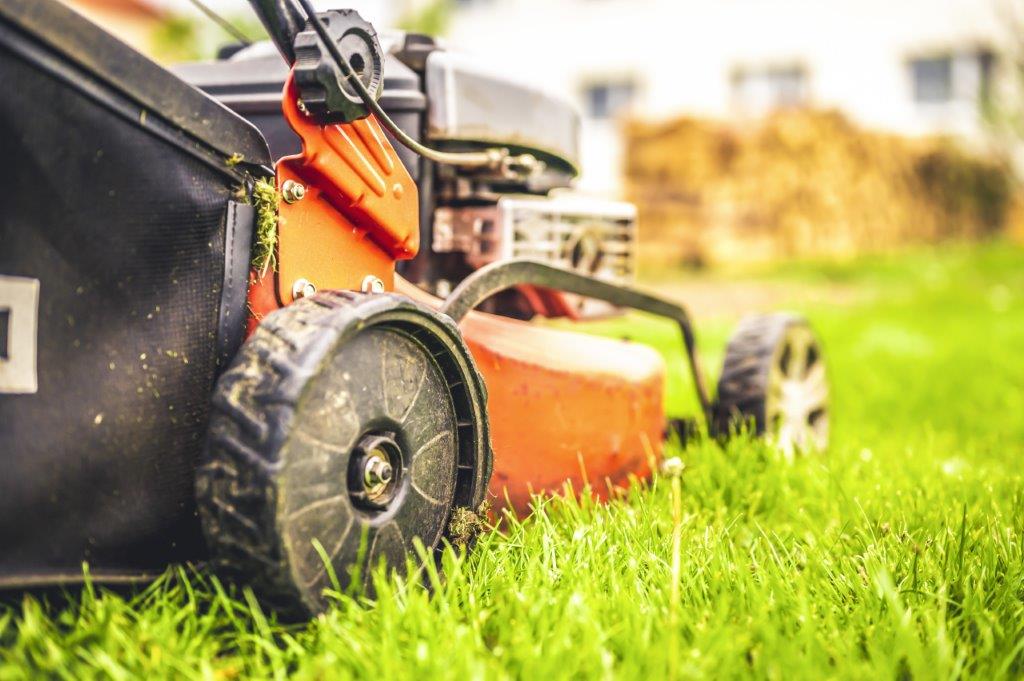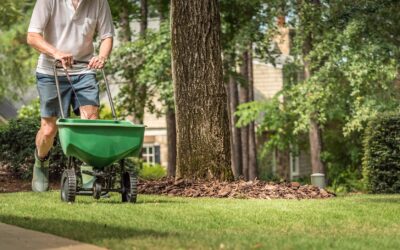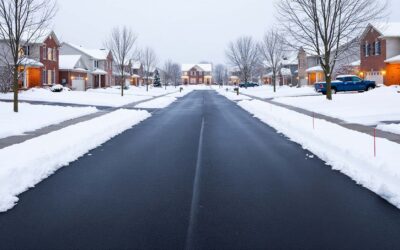If you have a yard, you should be practicing good yard maintenance. Not only can a well-kept yard boost the value of your home, total yard care helps your trees and shrubs live longer, healthier lives.
Unfortunately, yard work can also be costly, labor intensive, and time-consuming, and without the right information, you can do more harm than good. The National Association of Landscape Professionals reveals that 74% of US adults believe they know how to care for their lawn each season. However, their survey revealed that:
- 64% falsely believe all grass needs to be fertilized in spring
- 57% mistakenly believe if a lawn is green, it’s not healthy
- 32% admit they aren’t sure how often a lawn should be watered
- 69% admit their lawn/landscaping could use improvement
That’s where we come in. Whether you’re new to yard maintenance or you’ve been weeding and pruning your whole life, we’ve compiled information that will help you become a residential yard maintenance savant. Let’s get started…
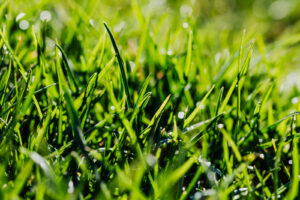 Know Your Grass
Know Your Grass
Depending on the grass you use, savvy lawn care can keep it green almost all year-round. Washington state primarily has five different types of grass:
- Kentucky bluegrass
- Perennial ryegrass
- Fine-leaved fescues
- Bentgrasses
- Turf-type tall fescues
All five of these are all cool-season grasses, meaning that they stay green until temperatures drop before 32℉. They can also survive these subfreezing temperatures for long periods of time.
Each of these grass types come with their own set of growing instructions. For example, perennial ryegrass seeds should be sow when soil temperatures are between 55℉-65℉, which is usually during the early spring or autumn seasons. Meanwhile, Kentucky bluegrass forages between temperatures of 60℉-90℉.
These five grass types come with different sets of watering and care instructions. For example, some tall fescues require only half as much water as Kentucky bluegrass. These grasses also have different weeding and mowing instructions. Do your research to determine which type of grass is right for you.
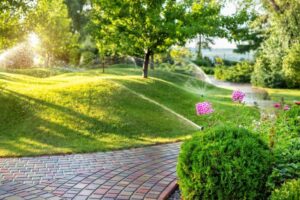 The Importance of Irrigation
The Importance of Irrigation
Irrigation supplies your yard with water at appropriate intervals. The time and frequency of irrigation varies according to the type of soil(s) you’re using, season, and the amount of rainfall. Without an efficient irrigation system, you run the risk of under-watering or overwatering your yard. Water buildup can kill grass, plants, and trees, while encouraging fungus and diseases. It can also damage wooden structures.
There are two main types of irrigation systems: sprinkler and drip. Sprinkler systems are usually a cheaper alternative and water your land above ground. They also work great for uneven land, which is common in the hilly Pacific Northwest.
Drip irrigation applies water slowly, directly to the soil itself. Despite its heftier price tag, drip irrigation can be more beneficial in the long run because it uses 20%-50% less water than normal sprinkler systems. It’s also good for mulched areas because when soaks the soil it doesn’t wash the mulch away.
Granular Slow-Release Lawn Fertilizer
When it comes to residential yard maintenance, many people believe that they should fertilize their lawn one or two times a year. We believe that you should usually be doing it more than that. There are many different types of fertilizers on the market, but we recommend using a granular slow-release fertilizer.
Granular fertilizers come in the form of tiny pellets that are easy to measure and spread. They also don’t need to be applied as often as water-soluble fertilizers. When using granulated fertilizer in flower beds and borders, broadcast it by hand and then scratch it into the soil. For open areas, we recommend using a mechanical spreader and water it right after applying. You should also always wash fertilizer granules off of foliage.
Slow-release fertilizers release a small, steady amount of nutrients over time, as opposed to quick-release fertilizers, which can force too much growth too fast. Slow-release fertilizers are also less likely to leach and their green up lasts longer.
Using Lime to Sweeten Your Soil
Soil is often referred to as being either “sour” or “sweet.” These terms are actually used to describe the pH level of your soil. PH values range from 0-14. 0 is acidic or “sour,” 14 is alkaline or “sweet,” and 7 is neutral. Most types of turf-grass need a pH between 5.8 and 7.2. When soil becomes too acidic, lawn grasses struggle and common lawn weeds, diseases, and insect pests can flourish in their place.
Lime is a soil amendment made from ground limestone rock, which naturally contains calcium carbonate and magnesium carbonate. Its primary role is to alter the pH of your soil and offset soil acidity, which can improve the availability of plant nutrients. Typically, spring and autumn are the best times to lime lawns. It’s especially beneficial in autumn because the cold and rainy weather helps lime break down and work more efficiently. Otherwise, lime can take several months before substantially changing the pH of your soil.
By applying lime to your soil as needed, your grass can get the nutrients and advantages it needs for healthy, beautiful growth.
Herbicides
Herbicides are chemicals that kill plants or prevent them from growing. They can be harmful, so you should always wear a protective mask, gloves, and long sleeves when using them. Store them in a safe place inaccessible to pets or children, and make sure they’re indoors when you use it. You’ll also want to avoid using herbicides on windy days and near bodies of water.
Herbicides come in two categories: selective and non-selective. Selective herbicides are chemically designed to only kill certain types of weeds while leaving other plants unscathed. Non-selective herbicides can kill almost any plant and are useful when treating weeds in gardens and lawns. Be sure to read the label before purchasing a herbicide to make sure that you’re getting the one that fits your needs.
Pre-emergent and Post-emergent Herbicides
Pre-emergent herbicides are used to prevent unwanted weeds in your lawn before they appear. These herbicides prevent:
- Crabgrass
- Foxtail
- Barnyardgrass
- Knotweed
- Ragweed
- Goosegrass
- Sandbur
- Carpetweed
- And more
They don’t stop the germination of the seed, but they do help prevent them from sprouting. If the weeds you’re looking to kill are already sprouted and visible, these herbicides won’t help you.
As the name suggests, post-emergent herbicides are effective on weeds that have already sprouted. Post-emergent herbicides kill weeds and ensure that they don’t grow back. Both pre-emergent and post-emergent herbicides come in multiple forms, depending on your climate and whether you are looking for a selective or a non-selective herbicide.
Yard Cleanup and Raking
Raking leaves is a pivotal component of yard cleanup. Cool-season grasses strengthen their root systems in autumn. While leaves look pretty resting atop your grass, they are also depriving it of sunlight.
Fallen leaves also block grass root systems from getting the essential nutrients, water, and healthy air flow they need. When left unattended, grass gets smothered by the weight of the leaves and can keep new blades from emerging in spring. All of this can be prevented by raking accordingly.
We also recommend raking up dead grass in spring. Dead grass can build up and become thatch, which can make it more susceptible to lawn diseases and hinders the movement of fertilizers, water, air, and nutrients into the soil. By practicing this yard cleanup technique, you can get rid of damaged grass and make it easier for new blades to sprout.
Add picking up debris to your yard maintenance checklist. Removing rocks, branches, and twigs will make your lawn looker cleaner and promote new grass growth. A full yard cleanup will also make it easier for you to determine if any winter damage may have been caused.
Fixing Cracks in the Concrete
Cold winters can cause cracks in your driveways, walking paths, and paved patio. Cracks are more than an eyesore – they can lead to significant problems if left untreated. When water seeps into them and freezes, it expands, enlarging the cracks.
Urethane caulk works great for concrete cracks. Cracks that are ¼ of an inch or smaller only require a caulk gun and a spoon. Draw the caulk gun down the crack, then smooth it over with the back of a spoon.
For larger gaps, install a foam backer rod to support the caulk. We suggest buying a rod that’s one size larger than the gap to ensure a tight fit. Once it’s fitted, fill the crack with urethane caulk with an even motion and then smooth it over with a spoon. You should clean the spoon as needed with a hand towel or rag and mineral spirits.
Urethane caulk is incredibly sticky, so keep it off your hands and clothes and wear disposable gloves. If you get it on your skin, quickly wipe it off with a rag soaked in paint thinner.
Weeding
Weeds compete with your lawn and plants for water, space, and nutrients, so they should be dealt with regularly. There are many methods to remove weeds, including:
- Pulling them out by hand
- Hoeing
- Tilling
- Mulching
- Burning
- Digging
- Using weedicides
We recommend weeding 2-3 times a month, all year round.
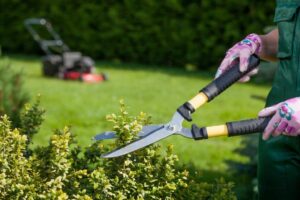 Pruning
Pruning
Pruning is an essential part of residential yard maintenance. When pruning, you’re removing dead and dying branches and stubs, and allowing room for new growth. It both promotes a plant’s healthy growth and natural shape while deterring pests and animal infestation.
Fruit trees, shrubs, hedges, and flowering plants all require different pruning methods at different times of the year. For example, most tree pruning is performed in the autumn and winter months because that’s when it creates the least amount of stress.
Fruit trees
Fruit trees should be pruned every year starting early on in the tree’s life. Without proper pruning, you might receive a bountiful harvest one year and a minuscule one the next.
Shrubs
Shrubs should be pruned every other month. Not only does this keep them in the best overall health, but it also prevents them from ever becoming an eyesore.
Hedges
Hedges have different pruning requirements based on their species. Evergreens, which are common in the Pacific Northwest, should be trimmed 2-3 times a year between May and September. Other variations require a little more attention.
Flowering Plants
Flowering plants should be pruned before buds are set to keep them from disturbing the following year’s blooms. If they bloom in early spring, for example, most flowering plants should be pruned a week or two after flowering. Do your research before pruning. Different flowering plants have different needs.
Planting New Life
Autumn is the best time to plant many trees, shrubs, bulbs, and perennials. This will help them establish root systems when spring comes around. September and October are the ideal months, but as long as the hottest days of summer have passed and the ground hasn’t frozen over, you can plant new life in your yard.
Yard Maintenance: Keep to a Schedule
Residential yard maintenance requires you to keep to a schedule. Different tasks have to be completed at key points throughout the year, so start your plan by drafting a calendar and sticking to it. Once you get the hang of it, you’ll be well on your way to having the healthiest, best looking yard on the block.
Yard Maintenance FAQS
When irrigating, should I go with a sprinkler system or a drip system?
It depends on your needs. Sprinkler systems are best suited for large, flat areas that require a substantial volume of water. Drip systems are most effective when you need to precisely water small areas or for plants that require a specific watering schedule.
What should I apply pre-emergent herbicides?
Pre-emergent herbicides should be applied when the soil temperature is around 55℉ or above for at least 36-72 hours. These herbicides should be applied in the early spring and autumn, but they can be applied at any point during the year.
How much should I spend on yard maintenance?
Prices will vary for residential yard maintenance based on your residence, location, and needs. Home Guide estimates that you can expect to pay $50-$100 per hour for smaller projects, and $4-$12 per square foot for larger jobs, such as installations.
How thoroughly should I rake my lawn?
You don’t have to rake up every fallen leaf. A few leaves here and there aren’t going to hurt your lawn. If you end up mowing your lawn after raking, the mower blade will shred the remaining leaves.
How often should I caulk cracks in the concrete?
We recommend filling these cracks at least once a year.

